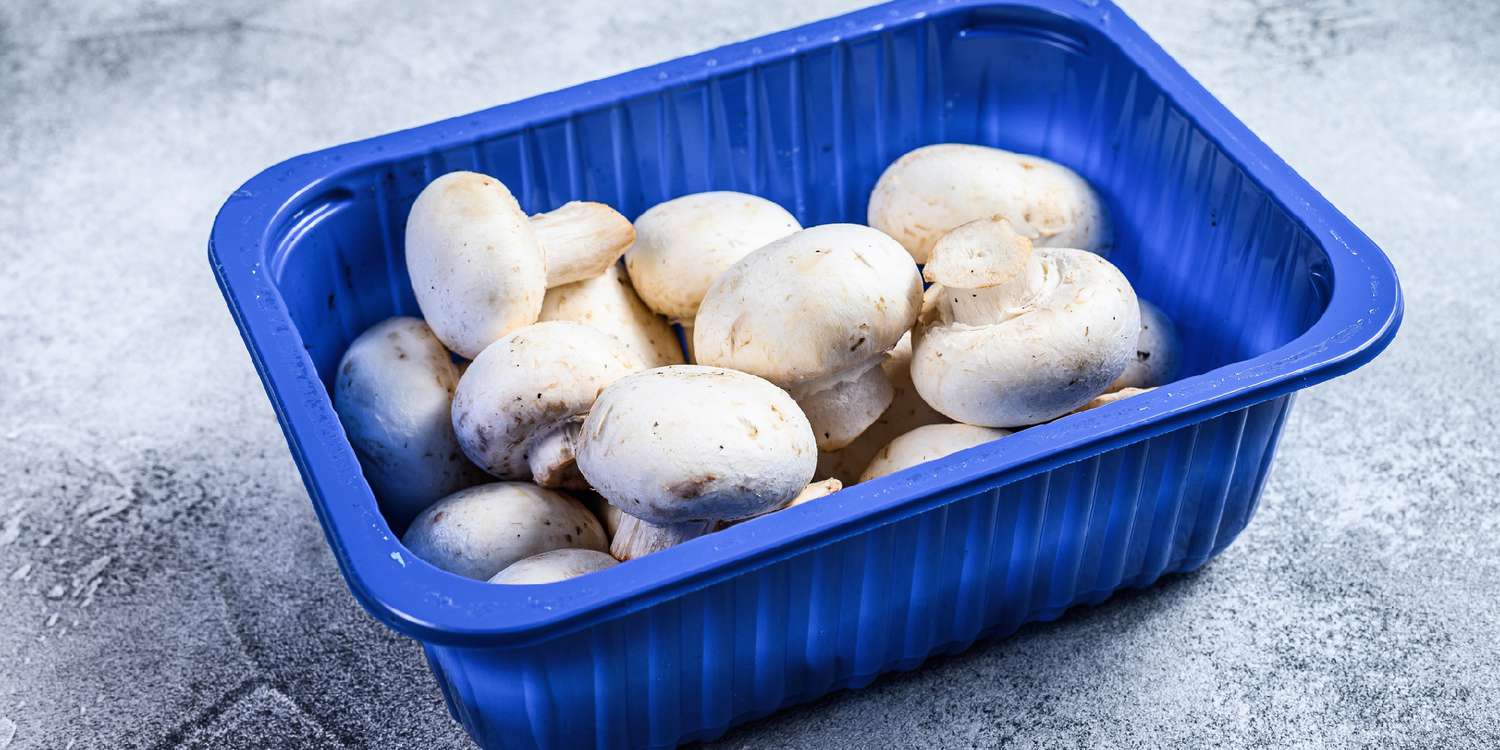Between their earthy, umami-like flavor and meaty texture, mushrooms are worth preserving as long as possible. But as anyone who has purchased these savory morsels knows, storing them can be tricky business.
Mushrooms are something of an enigma – it’s anyone’s guess how long they’ll last once transferred from the store to the home fridge. This is because the mushrooms only come equipped with a “packed on” date, rather than a “best by” date or “expiration” date. You could have two days to enjoy them, or you could have six.

How long your fungi are fresh may not be in your control, but how you store them is. Armed with a few key facts about these mysterious bulbs, getting the most you possibly can out of your produce won’t be so perplexing.
How Long Do Fresh Mushrooms Last?
Fridge: up to 7 days
Room temperature on the counter: 1-2 days
In freezer: 9-12 months
The Importance of Proper Mushroom Storage
Proper storage practice keep everyone in your household healthy. Once cooked, be diligent about tucking those mushrooms into the fridge as soon as they are cool. And be sure to eat those leftovers within 3 days.
Prior to cooking, it’s all about avoiding the slime – a substance created when bacteria start making a meal out of your mushrooms rather than you. Yummy, right? This stage of the fungi’s decomposition won’t necessarily hurt you, but it is a sign that mold and other bacteria that will aren’t far behind.

DOTDASH MEREDITH FOOD STUDIOS
Get the recipe: Chicken Marsala
How to Store Mushrooms
If you’re planning on using what you purchase in a matter of days, simply punch some holes in the plastic wrap of the original packaging (if there aren’t some already) before placing your mushrooms in the fridge.
If not, follow this process for the freshest mushrooms possible:
-
Remove mushrooms from their packaging
-
Place them in a paper bag or a paper towel-lined zip-top bag.
-
Roll the top of the bag down to allow the bag to stay open and place in the fridge on a shelf, not a crisper drawer.
Understanding Different Types of Mushrooms and Their Storage Needs
Mushrooms come in many types, but for discussing home storage, here are the ones most commonly found in standard markets, and what to look for to determine their freshness.
White Button
This is the most common household variety for all manners of cooking. They should be plump and firm with the cap attached.
Portobello
These large brown mushrooms are usually sold without the stem, their large, mostly flat caps about the size of burger buns (and easily substituted for them). They should smell earthy but not musty and their dark brown gills should look fresh and not slimy.
If their stem or a stump of it is still attached, it’s incredibly woody and should be discarded or used for stock.
Cremini
A small, brown mushroom, like button in size and use, but darker, more flavorful, and complex. They should be plump and firm with the cap attached.
Shiitake
Shiitake mushrooms should have smooth, firm caps and be tender rather than fully firm. Their texture will be somewhere between fully dry and slickly slimy. These shrooms also have woody stems that should be trimmed and discarded or saved for broth.
Oyster
The name of this mushroom is indicative of its shape, reminiscent of an oyster out of its shell. It is and should be off-white in color, with firmer, smooth tops and delicate ridges cascading into their stems. They should be dry and free of spots.
Porcini
This prized risotto addition has a smooth texture and a deep, woodsy flavor. Ensure it has not soft spots and the aroma isn’t sour.
Chanterelle
This yellow or pale-yellow variety is trumpet-shaped and should be free of spots. Make sure the mushroom feels soft and spongy, without being limp or slimy.
Thankfully, whether housing common mushrooms like white button or “fancier” fungi like chanterelle, storing them is basically the same.
Tips and Tricks for Prolonging Mushroom Freshness
- Removing the mushrooms from their store container will allow them to breathe a bit and shuffle them around so they won’t continue to settle in the positions they’ve been in and bruise.
- Mushrooms simultaneously have a high water content (80-90 percent, if you can believe it) while being sponges to other moisture. Combating that moisture needs to be top of mind.
- Keeping them in the dry, cool fridge is the best way to prolong their life, along with avoiding water (aka washing them) until the last possible second.
- A paper bag or paper towel-lined zip-top plastic bag will absorb the moisture mushrooms naturally release, preventing them from getting slimy.
- The crisper drawer of the fridge is too moist of an environment. It might be tempting, but don’t store your mushrooms in there. Leave them on a shelf.
- Do not wash your mushrooms until directly before preparing and cooking/eating them.
- Keep mushrooms away from any strong-smelling foods in the fridge. Their porous, sponge-like nature will absorb that odor.
Related:
- Is It Safe to Eat Slimy Mushrooms?
- Should You Wash Mushrooms You’re Going to Cook?
- Chef John’s Best Mushroom Recipes for Comforting Dinners




